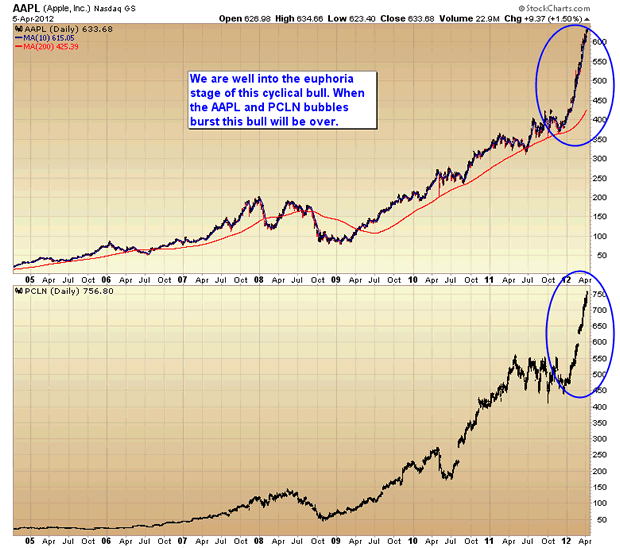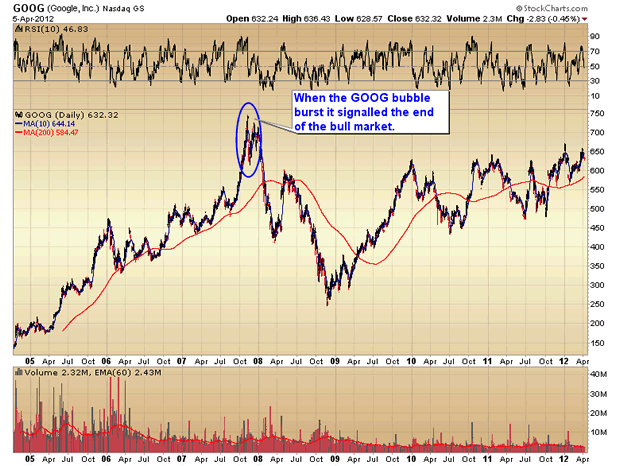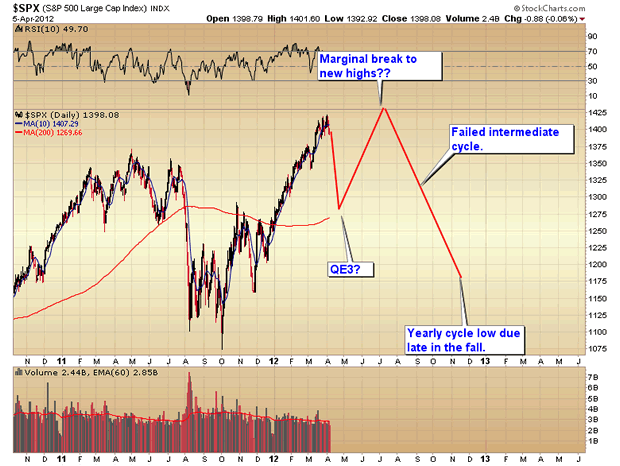A note to readers. This 2000-word commentary is a longer-term view; think in terms of years, not months or days. The essay is not in conflict with the fully invested position currently held at Cumberland. The words reflect my personal thinking only. Some of my colleagues disagree. In my personal view, the future is uncertain (of course) and may be unattractive for the longer-term outlook. In my view, our American political system is failing us. In my view, we are joining the list of declining world powers. The framework to support that argument follows.
“The external menace ‘You’ll end up like Greece, if you do not do this and that’ and the internal opprobrium heaped on some categories of taxpayers are very powerful and dangerous instruments to deprive people of their own personal freedoms.” –Vincenzo Sciarretta
My friend Vincenzo is a journalist from Italy. He is a serious writer and researcher. He has covered the financial markets and economy of Italy for years. He and I co-authored a book on Europe during the optimistic period. If he and I were to write such a book now, it would probably be quite pessimistic.
Vince responded to my recent email series about the downward spiral underway in the euro zone. Readers may find those essays at www.cumber.com. Vince noted my reports from the meetings in Paris and my reference to the upcoming French elections, where the promise of the Socialist candidate is to raise the tax rate on the highest income level to 75%. I will end this commentary with a longer email from Vince, in which he quotes historian Will Durant and discusses the fall of the Roman Empire.
Now to write some thoughts that gnaw at me in the late of the night, when sleep is elusive.
Simply put: I’m worried.

When I get worried, I read and re-read in my library. I can honestly say that I have had my nose in a thousand of those books. The library holds many texts by giants. They wrote about history, economics, and finance. They took the strategic view. George Akerlof, Jared Diamond, Niall Ferguson, Carmen Reinhart & Ken Rogoff, Robert Shiller, and Nassim Taleb are among the modern writers. Milton Friedman, Martin Gilbert, Friedrich Hayek and his polar opposite John Maynard Keynes, Ludwig von Mises, R.R. Palmer, and Adam Smith are among the classics.
A favorite of mine is Paul Kennedy. Twenty-five years ago, this Yale historian concluded his monumental work The Rise and Fall of Great Powers with a profound observation:
“In the largest sense of all, therefore, the only answer to the question increasingly debated by the public of whether the United States can preserve its existing position is ‘no – for it simply has not been given to any one society to remain permanently ahead of all the others, because that would imply a freezing of the differential pattern of growth rates, technological advance, and military developments which has existed since time immemorial.”
Kennedy then argued that the United States has the ability to moderate or accelerate the pace of decline. Such is also the case for other great powers, many of which are in a state of decline from their centuries-old power peak. Among others in his treatise, Kennedy’s history lessons examine Spain, France, Rome, and the Austro-Hungarian Empire.
I think I just covered a lot of the euro-zone geography.
In 1987, Kennedy warned us, “The task facing American statesmen over the decades, therefore, is to recognize that broad trends are under way, and that there is a need to ‘manage’ affairs so that the relative erosion of the United States’ position takes place slowly and smoothly.” He added the additional warning that it not be “accelerated by policies which bring merely short-term advantage but longer-term disadvantage.”
Unfortunately, America’s leadership has not heeded such warnings.
For decades futurists have complained about the rising use of government debt financing by the United States. They predicted calamitous outcomes, which did not arrive as expected. Paul Volcker and Alan Greenspan applied monetary policy in ways that allowed inflation and, hence, interest rates to spend a quarter century in decline. The Volcker-Greenspan era opened with the highest interest rates since the Civil War. Building on this downward momentum, Ben Bernanke has taken the target short-term interest rate to near zero and held it there.
During the same three decades, the US altered its fiscal policy, first under Ronald Reagan and almost continuously since. (The Clinton administration was the exception.) Rising deficit financing has been facilitated by falling nominal interest rates. That combination leads to level, or even falling, aggregate debt service. You can owe more and more and have smaller and smaller monthly payments. That is the magic of falling interest rates. Until they hit the zero boundary.
What happens when the music stops and the chairs are full? Are we reaching that point in the United States? It appears we have done so in Europe, certainly in Greece, the eldest of the declining great powers. We are also getting there in Japan and the UK. All four confront similar financial straits: zero-bound interest rates coupled with expanding national government debt.
About 85% of the capital markets of the world trade by means of the dollar, yen, pound, and euro. The G-4 central banks have collectively expanded their holdings of government securities and loans from $3.5 trillion to $9 trillion in just four years. At the prevailing very low interest rates, the functioning of monetary policy and the role of fiscal policy merge. Is there any difference between a million-dollar suitcase of one hundred dollar bills and a million-dollar, zero-interest treasury bill? You need an armed guard to protect the first one. With the second one, you need to clear an electronic trade in a safe financial institution, not an unsupervised (no more Fed surveillance) Federal Reserve primary dealer like MF Global. Your earnings on either the cash or the T-bill are the same: you earn zero. You can use the treasury bill to secure a repo transaction at a near-zero interest rate. You can use the cash to conduct many types of black-market or gray-market trades. Is it any wonder that the hundred-dollar bill is so popular? Isn’t it understandable that roughly two-thirds of US currency circulates outside the United States?
Is this a healthy situation? How long can it persist? What happens next? When interest rates eventually rise, what will be the result of this blend of monetary/fiscal policy as its unwinding turns malignant?
Moreover, who then will be the politicians that inherit this mess? Who will occupy the central banker’s chair?
I worry because there is no rationally explained strategic-exit plan in the G4. Not in the US. Not in Japan. Not in the euro zone. Not in the United Kingdom.
I also worry because the direction of taxation is up, if certain politicians continue to have their way. I worry because US business tax rates are now the highest in the entire world. In addition, I worry because of the increasing power that national governments wield in the mature economies of the world.
Applied power eventually leads to serfdom.
Increasing taxation is a characteristic of a declining great power.
Governments are failing to heed Paul Kennedy’s warnings. They are worsening the longer-term outlook. The Western world’s leaders ignored Kennedy when he wrote “… accelerated by policies which bring merely short-term advantage but longer-term disadvantage.”
Zero-bound interest rates are a short-term advantage. We enjoy them. We profit from them. We expect them to continue for a while. They are like the oxygen administered to a very ill patient. If the patient dies, the oxygen has eased the pain in the terminal phase. If the patient lives, the lungs have been scarred and need many years of healing and repair. Today, the patient is receiving oxygen in the G4. Death is being delayed (Greece) or, perhaps, thwarted (elsewhere in the euro zone, Japan, US, and UK).
We do not know how this will play out. History only warns us that many of the likely outcomes may be unpleasant. The authors I cited have articulated their differing and diverse views. Their conclusions have tended to be in the form of warnings.
Paul Kennedy favors candor. In his second, exquisite work, Preparing for the Twenty-First Century, he wrote: “Many earlier attempts to peer into the future concluded either in a tone of unrestrained optimism, or in gloomy forebodings, or (as in Toynbee’s case) in appeals for spiritual revival. Perhaps this work should also finish on such a note. Yet the fact remains that simply because we do not know the future, it is impossible to say with certainty whether global trends will lead to terrible disasters or be diverted by astonishing advances in human adaption.”
Of course, we hope for the latter and worry about the former. History gives us little comfort.
For the time being we shall remain on the sanguine side with regard to this global experiment with increasing debt, zero-bound interest rates, and a monetary/fiscal policy compromise that obfuscates the difference between them.
As long as this persists, it means financial markets do well, stocks rise, risk assets regain favor, bonds with hedges yield results, and cash continues to earn zero return.
That is now. It may change tomorrow, next week, next month, next year or not for quite some time. There is no way to know.
For the downside from history we return to Vincenzo’s email to me:
“Dear David,
“I invite you to read the last few sentences of the below article from The Lessons of History, by Will and Ariel Durant. It is about how the destruction of the Roman Empire through the taxation channel made people ‘slaves,’ in other words how serfdom emerged. This is my number one fear for Italy, but I guess France is making the same mistakes, just starting from a lower debt level. You can also find an online version of the book, thanks to Google.
“Rome had its socialist interlude under Diocletian. Faced with increasing poverty and restlessness among the masses, and with the imminent danger of barbarian invasion, he issued in A.D. 3 an edictum de pretiis, which denounced monopolists for keeping goods from the market to raise prices, and set maximum prices and wages for all important articles and services. Extensive public works were undertaken to put the unemployed to work, and food was distributed gratis, or at reduced prices, to the poor. The government – which already owned most mines, quarries, and salt deposits – brought nearly all major industries and guilds under detailed control. ‘In every large town,’ we are told, ‘the state became a powerful employer, standing head and shoulders above the private industrialists, who were in any case crushed by taxation.’ When businessmen predicted ruin, Diocletian explained that the barbarians were at the gate, and that individual liberty had to be shelved until collective liberty could be made secure. The socialism of Diocletian was a war economy, made possible by fear of foreign attack. Other factors equal, internal liberty varies inversely with external danger.
“The task of controlling men in economic detail proved too much for Diocletian’s expanding, expensive, and corrupt bureaucracy. To support this officialdom – the army, the courts, public works, and the dole – taxation rose to such heights that people lost the incentive to work or earn, and an erosive contest began between lawyers finding devices to evade taxes and lawyers formulating laws to prevent evasion. Thousands of Romans, to escape the tax gatherer, fled over the frontiers to seek refuge among the barbarians. Seeking to check this elusive mobility and to facilitate regulation and taxation, the government issued decrees binding the peasant to his field and the worker to his shop until all their debts and taxes had been paid. In this and other ways medieval serfdom began.”
Thank you, Vincenzo, for this serious response. Thank you Paul Kennedy for superbly articulating history and issuing clear warnings. Thank you, dear reader, if you are still with me. I hope I have provoked some thought.
Now we will seek another night’s sleep and hope it is not elusive.
David R. Kotok, Chairman and Chief Investment Officer





















